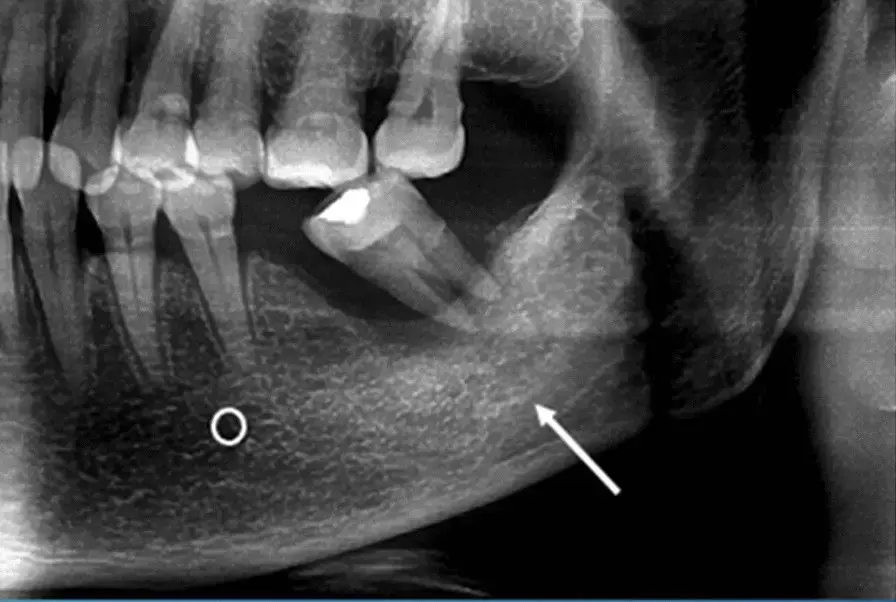- Home
- Medical news & Guidelines
- Anesthesiology
- Cardiology and CTVS
- Critical Care
- Dentistry
- Dermatology
- Diabetes and Endocrinology
- ENT
- Gastroenterology
- Medicine
- Nephrology
- Neurology
- Obstretics-Gynaecology
- Oncology
- Ophthalmology
- Orthopaedics
- Pediatrics-Neonatology
- Psychiatry
- Pulmonology
- Radiology
- Surgery
- Urology
- Laboratory Medicine
- Diet
- Nursing
- Paramedical
- Physiotherapy
- Health news
- Fact Check
- Bone Health Fact Check
- Brain Health Fact Check
- Cancer Related Fact Check
- Child Care Fact Check
- Dental and oral health fact check
- Diabetes and metabolic health fact check
- Diet and Nutrition Fact Check
- Eye and ENT Care Fact Check
- Fitness fact check
- Gut health fact check
- Heart health fact check
- Kidney health fact check
- Medical education fact check
- Men's health fact check
- Respiratory fact check
- Skin and hair care fact check
- Vaccine and Immunization fact check
- Women's health fact check
- AYUSH
- State News
- Andaman and Nicobar Islands
- Andhra Pradesh
- Arunachal Pradesh
- Assam
- Bihar
- Chandigarh
- Chattisgarh
- Dadra and Nagar Haveli
- Daman and Diu
- Delhi
- Goa
- Gujarat
- Haryana
- Himachal Pradesh
- Jammu & Kashmir
- Jharkhand
- Karnataka
- Kerala
- Ladakh
- Lakshadweep
- Madhya Pradesh
- Maharashtra
- Manipur
- Meghalaya
- Mizoram
- Nagaland
- Odisha
- Puducherry
- Punjab
- Rajasthan
- Sikkim
- Tamil Nadu
- Telangana
- Tripura
- Uttar Pradesh
- Uttrakhand
- West Bengal
- Medical Education
- Industry
Tooth extraction significant risk factor for osteoradionecrosis, particularly when post-extraction sockets receive high RT dosage: Study

Tooth extraction is a significant risk factor for osteoradionecrosis, particularly when post-extraction sockets receive a high RT dosage suggests a study published in the Oral Diseases.A study was done to evaluate osteoradionecrosis (ORN) incidence in a cohort of patients undergoing tooth extraction (TE) before radiotherapy (RT) for head and neck cancers. The Ethics Committee of...
Tooth extraction is a significant risk factor for osteoradionecrosis, particularly when post-extraction sockets receive a high RT dosage suggests a study published in the Oral Diseases.
A study was done to evaluate osteoradionecrosis (ORN) incidence in a cohort of patients undergoing tooth extraction (TE) before radiotherapy (RT) for head and neck cancers. The Ethics Committee of Università Cattolica del Sacro Cuore (ID-2132) approved the study protocol and registered it at clinicaltrials.gov (ID: NCT04009161). TE was performed in case of signs of pericoronitis, periapical lesions, restorative impossibility, and severe periodontitis. ORN was defined as an exposed bone at an unhealed post-extraction socket in the absence of oncological recurrence. The RT plans were reviewed, and each post-extractive socket was contoured to calculate the received radiation dose. RESULTS
In total, 156 patients with 610 TE were enrolled. The mean follow-up was 567 days. ORN was diagnosed in four patients (2.6% of patients and 0.7% of TE). Need for osteotomy and radiation dose at the extraction site were associated with ORN (OR for osteotomy: 21.9, 95% CI: 2.17-222.2, p = 0.009; OR for RT dose: 1.1, 95% CI: 1-1.15, p = 0.05). TE appears to be a significant risk factor for ORN, particularly when osteotomy is required, and post-extraction sockets receive a high RT dosage. This study proposes a decision-making algorithm for TE and outlines a straightforward surgical protocol.
Reference:
Oral Dis 2024 Apr 09;[EPub Ahead of Print], C Rupe, G Gioco, M Massaccesi, L Tagliaferri, F Pastore, F Micciché, J Galli, D Mele, ML Specchia, A Cassano, M Cordaro, C Lajolo
Keywords:
Tooth extraction, significant, risk, factor, osteoradionecrosis, particularly, post-extraction, sockets, receive, high RT dosage, study, oral diseases
Dr. Shravani Dali has completed her BDS from Pravara institute of medical sciences, loni. Following which she extensively worked in the healthcare sector for 2+ years. She has been actively involved in writing blogs in field of health and wellness. Currently she is pursuing her Masters of public health-health administration from Tata institute of social sciences. She can be contacted at editorial@medicaldialogues.in.


